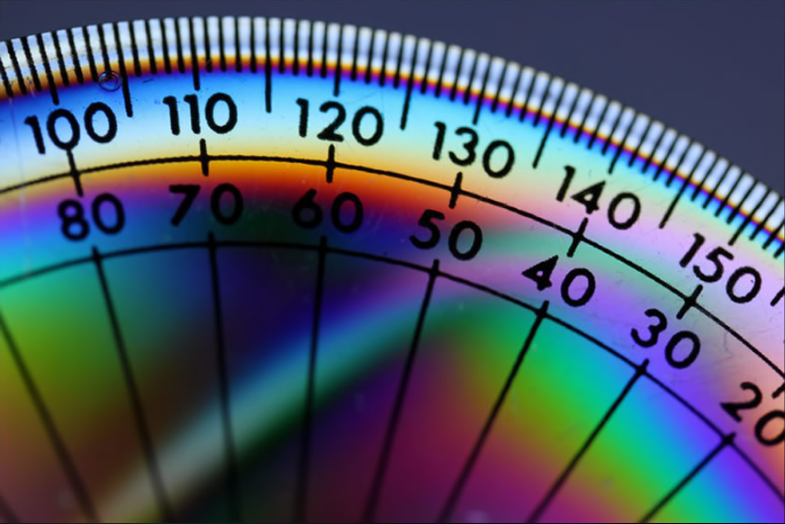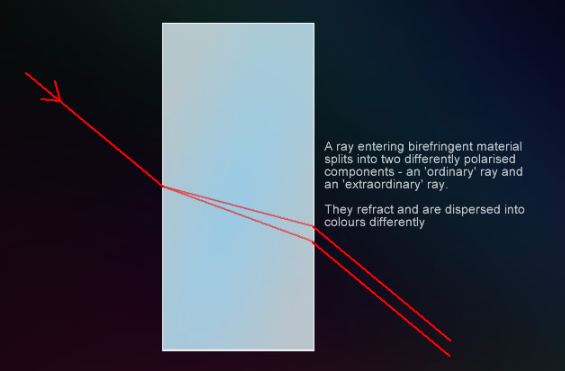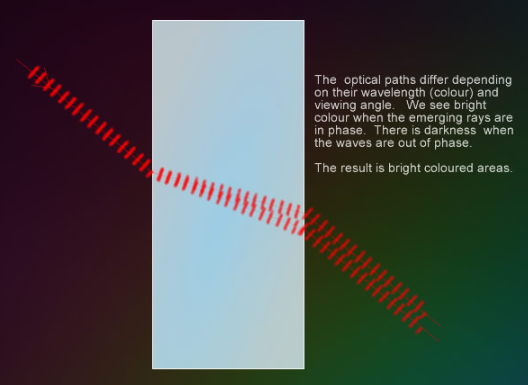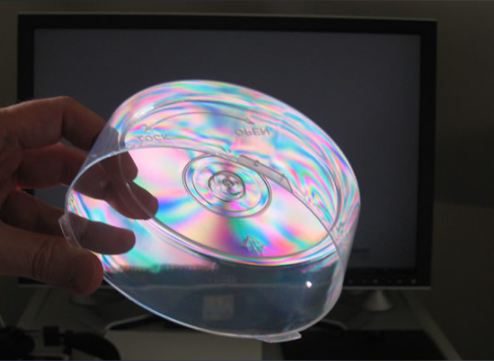OPOD - Protractor Strains
OPOD - Protractor Strains: Revealing the Hidden Patterns
Have you ever wondered how the strains in plastic objects can be visualized? When plastics are molded or extruded, the molecules within them can become partially aligned, resulting in strains that are frozen into the material. These frozen-in strains make the plastic anisotropic, meaning it has different optical properties in different directions. This phenomenon is known as birefringence. In this article, we will explore how birefringence reveals the hidden strains in plastic objects, and how you can observe these patterns using polarized light.
Unveiling the Hidden Patterns
With unpolarized light, little is seen when observing birefringent plastic objects. However, when illuminated with polarized light and viewed through a second polarizer, mesmerizing multicolor patterns emerge, revealing the frozen-in strains. To observe these patterns, you can use a white LED monitor screen as a polarized light source and a camera polarizing filter or polarizing sunglasses as a viewer. Simply place a transparent plastic object in front of the screen and view it through the polarizer. As you rotate either the object or the polarizer, you will witness a captivating change in colors.
The Magic of Birefringence
Birefringence is a phenomenon where a material splits the entering light into two distinct rays, each polarized and refracted differently. These two rays also disperse colors differently, which becomes evident when the incoming light is first polarized and then viewed through a second polarizer. As a result, we observe patches of vibrant colors.
The colors arise from constructive and destructive interference between the two differently polarized rays. As the two rays traverse the plastic, they have slightly different optical path lengths. When they emerge, their wave crests can either be in phase and combine to produce a bright color or be out of phase, resulting in less or no light. The specific color and intensity of the patches depend on the wavelength (color) and the viewing angle.
Exploring Stress Patterns
The study of these strain patterns, known as photoelasticity, has been used to analyze stress patterns in materials. By examining how the colors change and interact, scientists and engineers can gain insights into the distribution of stresses within a material. However, numerical methods have now complemented or even superseded photoelasticity to a certain extent.
Unleashing the Colors
To further explore the fascinating world of birefringence and strain visualization, you can experiment with thin plastic sheets. Try stretching or twisting them while observing the resulting color changes. This hands-on approach allows you to witness the immediate impact of mechanical deformation on the strain patterns frozen within the plastic.
Conclusion
Birefringence is a remarkable optical property of certain materials that unveils hidden strains and stress patterns. By illuminating plastic objects with polarized light and observing them through a second polarizer, we can witness stunning multicolor patterns that highlight the frozen-in strains. The colors arise from the interference between differently polarized rays, providing valuable insights into the distribution of stresses within materials. So next time you come across a plastic object, take a moment to appreciate the hidden beauty revealed by birefringence.

Protractor Strains ~ Birefringence reveals strains frozen into a plastic protractor during its moulding. Imaged by Graham Stephen. ©Graham Stephen, shown with permission.


When plastics are extruded and moulded their component molecules can become partially aligned and any strains induced by the flow and cooling can be permanently �frozen in�. The result is that the material becomes anisotropic with optical properties different in different directions. The plastic becomes birefringent.
Little is seen with unpolarised light. But when illuminated with polarised light and viewed through a second polariser, multi- colour patterns show up the frozen in strains.
A white LED monitor screen is an excellent polarised light source and a camera polarising filter or polarizing sunglasses a good viewer. Place a transparent plastic object in front of the screen and view it through the polariser. The colours change as the object or polariser are rotated.
Try stretching or twisting a thin plastic sheet while watching the colours.
Birefringence:
In the simplest type of birefringence the material splits light entering it into two distinct rays which are polarised and refracted differently.
The two rays also have their colours dispersed differently and this becomes apparent when the incoming light is first polarised and the emerging light is viewed through a second polariser. We then see colour patches.
The colours arise from constructive and destructive interference between the two differently polarised rays. The two rays have slightly different optical path lengths as they traverse the plastic. On emerging, their wave crests can be in phase and combine to give a bright colour. They could also be out of phase giving less or no light. The phase condition depends on the wavelength (colour) and the viewing angle.
The result is patches of colour that show up the strain patterns. The phenomenon called photoelesticity is used to analyse stress patterns in materials although to some extent it has now been superceded or at least complemented by numerical methods.

Note: this article has been automatically converted from the old site and may not appear as intended. You can find the original article here.
Reference Atmospheric Optics
If you use any of the definitions, information, or data presented on Atmospheric Optics, please copy the link or reference below to properly credit us as the reference source. Thank you!
-
<a href="https://atoptics.co.uk/blog/opod-protractor-strains/">OPOD - Protractor Strains</a>
-
"OPOD - Protractor Strains". Atmospheric Optics. Accessed on April 29, 2024. https://atoptics.co.uk/blog/opod-protractor-strains/.
-
"OPOD - Protractor Strains". Atmospheric Optics, https://atoptics.co.uk/blog/opod-protractor-strains/. Accessed 29 April, 2024
-
OPOD - Protractor Strains. Atmospheric Optics. Retrieved from https://atoptics.co.uk/blog/opod-protractor-strains/.